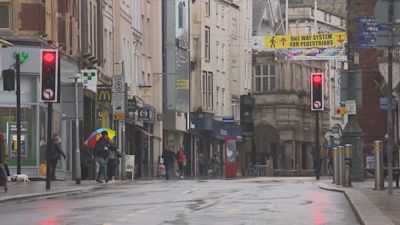Devon: 'Be sensible' plea to residents despite having some of England's lowest Covid infection rates

Devon’s health bosses are urging people to "be sensible" now social contact and mixing has increased in England.
It comes as the nation moved into its next phase of Boris Johnson's roadmap on Monday, which saw the reopening of non-essential shops, hair salons, gyms, and pub gardens.
Devon as an upper tier authority level has the second lowest infection rate in England at 7.2 cases per 100,000 people, with only East Sussex having a lower rate.
Infection rates in North Devon have also hit the milestone figure of zero – with no cases recorded in a seven-day period.
Between 3 and 9 April, there was not a single positive case from 9,942 tests – lateral flow and PCR – making it the first of any district in England to record no cases in a seven-day period since Torridge last September.
However, three positive cases have subsequently been recorded – one from April 10, 11 and 12 – but as the infection rates cover a seven day period five days in arrears, it means that for one day, North Devon’s infection rate was 0.
Across the rest of Devon in the same seven day period, Torridge, West Devon, East Devon and South Hams also recorded single figure case numbers.
Infection rates in Exeter and Teignbridge were also below the 10 cases per 100,000 mark, with Mid Devon the highest of Devon’s districts, with a rate of 18.2.
A Team Devon Local Outbreak Engagement Board meeting heard that case rates in Devon were very low, which council leader Cllr John Hart said was "very good news".
However the guidance around social distancing and wearing of face coverings where appropriate still needs to be followed.
Residents are being urged to be sensible, councillors said, and while the economy has begun to open up, it may have an impact on case rates.
Tina Henry, assistant director of public health, said: “The easing of lockdown will have an impact on people mixing and there may be some changes in cases across the county, but they are very low.
“The message is to be sensible, as the social distancing guidance still applies and that has not changed, and while we are seeing more people out and about and that is a positive thing, mixing indoors is still not allowed and that is an important message to remember.
“We are still getting some outbreaks and some in workplaces, but they are smaller in number and not in care homes. Coronavirus is still out there and it is still important to follow the rules and we need to respond rapidly to outbreaks to keep the numbers low. It is important to find the cases, and that they self-isolate, and we understand their contacts and can trace their contacts.”
She added: “We are operating local zero where Devon County Council are working with the national NHS system but we are taking the cases on day one, so it allows the local contact tracers to contact people immediately and we are reaping the rewards as we are reaching well over 90 per cent of contacts, and doing that quickly allows people to support to self-isolate and any early identification of outbreaks.”
Simon Chant, public health specialist, added infection levels were similar to early September and as further restrictions ease, they will carefully study and monitor the effects and expect rates to stay at similar level for the next few weeks.
The meeting also heard that Devon County Council is making lateral flow testing easier to access, as they have arranged mobile community testing in Ashburton, Axminster, Barnstaple, Bideford, Buckfastleigh, Crediton, Cullompton, Dartmouth, Dawlish, Exeter, Exmouth, Great Torrington, Holsworthy, Honiton, Ilfracombe, Ivybridge, Kingsbridge, Lynton-Lynmouth, Newton Abbot, Okehampton, Seaton, South Molton, Tavistock, Teignmouth, Tiverton and Totnes.
The meeting also heard from Dr Paul Johnson, clinical chair of the Devon CCG, that vaccine uptake across the county had been more than 90 per cent, with him adding: “People are doing the right thing to get the vaccine and we are doing what we can to give them the opportunity to take it.”
Credit: Daniel Clark, The Local Democracy Reporting Service
Read more: